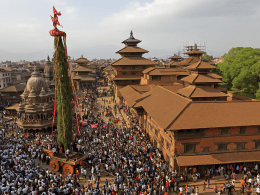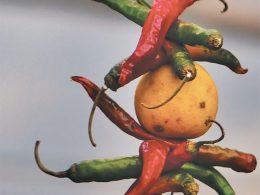“In Dashain, everyone must leave the ground at least once.”
This old Nepali saying reflects the deep cultural belief that swinging during Dashain ensures one’s soul a place in heaven after death. Rooted in this myth, the swing—or ping—has become more than a pastime. It is a space for joy, community bonding, and health benefits that tie ancient rituals to modern life.
The Cultural Significance of Dashain Swings
Dashain, Nepal’s biggest festival, is not only about tika, jamara, and family feasts—it is also the time when temporary swings are built in villages and neighborhoods. Traditionally, these swings serve as a way for communities to gather, share laughter, and reconnect with friends and family.
- Rote Ping (Rotating Swing):
In earlier days, villagers carved wood and assembled wooden planks to create rotating swings, hence the name Rote Ping. These have now become rare, seen only in a few rural areas during festival season. - Bamboo Swings:
The more common form today is the bamboo swing, tied with ropes and erected in open fields. It represents community collaboration, as young people and elders come together to build it before the festival begins.
The Health Angle: More Than Just Fun
While the ping is largely seen as a source of entertainment, it has surprising health benefits:
- Digestive Aid: Dashain feasts are heavy with meat, fried delicacies, and sweets. Swinging helps activate core muscles, improves blood circulation, and supports digestion after overeating.
- Muscle Exercise: The motion engages arms, legs, and abdominal muscles, giving the body a natural workout.
- Mental Refreshment: Swinging stimulates the brain by balancing motion and coordination, keeping the mind alert and reducing stress.
In essence, the swing acts as a traditional form of exercise disguised as play.
Why Swings Are Disappearing
Urbanization, digital entertainment, and the rise of individualistic lifestyles have reduced the popularity of swings in Nepal. Once a central social space, they are now rare in cities. The COVID-19 pandemic further highlighted this decline, as people turned to virtual connections instead of physical gatherings. Yet, in rural Nepal, the tradition continues, reminding people of community roots and natural joy.
The Global History of Swings

The ping is not unique to Nepal—it is part of a global cultural history.
- Ancient Greece: Archaeologists discovered pottery from the 5th century BCE showing women and children enjoying swings. This indicates swings were part of Greek cultural and possibly ritualistic life.
- China: Historical texts suggest swings were popular during the Han Dynasty, associated with spring festivals.
- India: In Hindu mythology, swings appear in stories of Krishna and Radha, where swinging is symbolic of love, devotion, and joy during the monsoon season.
- Europe: By the 18th century, swings became a symbol of leisure and romance in European art, famously depicted in Jean-Honoré Fragonard’s painting The Swing.
This cross-cultural presence of swings shows their universal appeal as a medium of joy, connection, and ritual.
Swings as a Bridge Between Past and Present
In Nepal, Dashain swings are more than festive toys—they symbolize community, belief, health, and heritage. In a rapidly modernizing society, reviving this tradition could remind us of the balance between body, mind, and social connection. Whether seen in a Nepali bamboo swing or an ancient Greek artifact, the joy of leaving the ground remains timeless.
See Nepal in every scroll: Follow us on Facebook, Instagram, and TikTok for stories that bring the country to life.








 The more common form today is the bamboo swing, tied with ropes and erected in open fields. It represents community collaboration, as young people and elders come together to build it before the festival begins.
The more common form today is the bamboo swing, tied with ropes and erected in open fields. It represents community collaboration, as young people and elders come together to build it before the festival begins.

